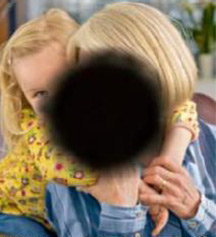Cataract
A cataract is a clouding of the lens and as it develops it causes blurred vision. It is treated surgically by a technique called phaocemulsification. A small incision (2.2 mm) is made on the eye, the cataract is broken up with ultrasound and then hoovered up. Finally a plastic artificial lens (IOL) is inserted into the eye where it remains forever. Once your cataract has been removed, it cannot develop again. It is possible however for the bag or capsule that supports your implant to become cloudy (capsule opacification) and this can blur your vision. However this can be dealt with by a straightforward laser procedure (YAG capsulotomy) that is fast, painless and quickly restores your vision.
Glaucoma
Glaucoma is a condition that damages the optic (vision) nerve and is usually due to high pressure in the eyeball. Typically occurring after the age of 40, anyone can develop glaucoma but those with a family history can be at a significantly increased risk. Once diagnosed it requires lifetime monitoring with regular pressure checks, visual field testing and optic nerve scans (OCT scan). Treatment options include eye drops, laser (MLT/SLT/ALT) and surgery (trabeculectomy and stenting).
Age-Related Macular Degeneration (AMD)
As the name applies it is a condition that virtually always affects the elderly although the first signs can be seen after the age of 50-55. Although it can cause blindness most people are only minimally affected. Those who are affected may not develop significant symptoms for many years after the onset of the disease. They are 2 types of AMD, wet and dry. Everyone starts out as having the dry type and only about 10-15% of these will develop the wet form. ‘Wet’ and ‘dry’ simply refers to the appearance of the macula (centre of the retina) to the examining eye doctor.
- Normal
- Distortion
- End Stage
People with AMD can develop painless loss of vision and distortion of their vision. If the condition progresses unchecked it can eventually lead to loss of central vision and blindness. There is no effective treatment for dry AMD although a diet rich in omega fatty acids and luteins as well as dietary supplements in the form of luteins, vitamins (C and E) and minerals (copper and zinc) have been shown to slow down its progress in some people. Also smoking, a high body mass index (BMI) and a family history of AMD are risk factors for its development. It is hoped that newer effective treatments for dry AMD will become available in the next several years.
There are several treatments available for wet AMD and the treatment chosen will depend on the result of a dye test (fluorescein angiogram). The most common treatment involves a series of injections into the eye of a drug (anti-angiogenic or anti-VEGF therapy) that causes the abnormal blood vessels to wither or stop leaking fluid. This usually stabilizes or can even improve the vision. To maintain the benefit these injections may have to be repeated at various intervals in the future. Other treatments include laser where the abnormal blood vessels are destroyed either directly (laser photocoagulation) or indirectly (photodynamic therapy). Occasionally a combination of these treatments may be required.
Diabetes
Diabetes results from elevated levels of sugar or glucose in the blood stream (hyperglycaemia). Over time this causes damage to blood vessels throughout the body, including the back of the eye or retina. We call this Diabetic Retinopathy (DR) and it requires lifelong monitoring. This can lead to loss of vision by 2 separate mechanisms both of which can overlap with each other.
In the first situation, damaged blood vessels can leak to cause swelling of the centre of the retina or macula and this is referred to as macular oedema or diabetic maculopathy or simply swelling in the back of the eye. Occasionally these blood vessels can become irreversibly damaged and cause permanent loss of vision. Treatment of macular oedema is usually with a series of injections into the eye (anti-angiogenic or anti-VEGF therapy), laser or a combination of both. In the second instance, damage to the blood vessels can cause them to start closing, and this can give rise to the growth of new delicate blood vessels on the surface of the retina which can bleed (vitreous haemorrhage) to cause loss of vision. This is referred to as proliferative diabetic retinopathy. Laser therapy is the treatment of choice for this type of retinopathy. However if a vitreous haemorrhage occurs a procedure (vitrectomy) to remove this blood may be necessary while in more advanced cases more complex retinal surgery may be required.
Central/Branch Retinal Vein Occlusion (CRVO/BRVO)
The large vein draining blood from the retina is called the central retinal vein. It is formed by 4 tributaries or branches from each quadrant of the retina. Blockage to the central vein causes a central retinal vein occlusion while blockage to one of the tributaries causes a branch retinal vein occlusion. Both types can cause sudden and profound loss of vision due to the swelling (macular oedema) that occurs as a result of the blockage. They are most commonly associated with high blood pressure (hypertension), high cholesterol and diabetes.
Vein occlusions are usually managed by a series of injections into the eye (long-acting steroids or anti-angiogenic/anti-VEGF therapy) and these can be combined with laser. BRVO can also cause abnormal blood vessels to grow on the surface of the retina and these can bleed to cause a vitreous haemorrhage. Bleeding can be prevented by timely delivery of laser or if bleeding has already occurred then a vitrectomy to remove the blood may be necessary.
A CRVO can be associated with abnormal blood vessel growth also and this most commonly occurs on the iris (the coloured part of the eye). In this situation the pressure in the eye can become high (rubeotic glaucoma) giving rise to pain in addition to loss of vision. Again the most effective management is timely delivery of laser.
Flashes and Floaters
Flashes and floaters are a common abnormality that are associated with a condition called posterior vitreous detachment (separation of the vitreous gel in the back of the eye from the retina). The sensation experienced is one of a visual disturbance but this tends to settle usually over a period of months. However its significance lies in the fact that in a small number of patients the separation can tear the retina and this can lead to retinal detachment which without treatment is usually a blinding condition. If detected promptly the tear can be treated with laser or cryotherapy thus preventing the retina from detaching.
Retinal Detachment
If the retina does detach then surgical treatment is necessary. This usually involves a procedure called a vitrectomy and the injection of a gas bubble into the eye. In some instances where a complex detachment occurs silicone oil is injected to provide a better long term support for the retina. Whereas a gas bubble absorbs by itself, silicone oil requires a further operation for removal. Alternatively the retina can be re-attached by placing a silicone element (buckle) around the eyeball. Again in complex cases a buckle can be combined with a vitrectomy. Finally a retina can sometimes be re-attached by combining a gas injection with either laser or cryotherapy (pneumatic retinopexy).
Vitreous Haemorrhage
See diabetic retinopathy and central/branch retinal vein occlusion.
Macular Hole, Epiretinal Membrane and Vitreomacular traction
These are all problems that affect the macula or centre of the retina. They can cause gradual onset of distortion and painless loss of vision. They are all treated surgically with a vitrectomy with macular hole surgery also requiring the injection of a gas bubble. More recently an eye injection for the treatment of impending macular hole has become available.



